Please Note: Firefox and some other search engines are not suitable – Use “Internet Explorer” for this page to load perfectly!
Click the logo above to reach the ssMaritime FrontPage for News Updates & “Ship of the Month”
With Reuben Goossens
Maritime Historian, Cruise‘n’Ship Reviewer & Author
Please Note: All ssMaritime and my other related ssMaritime sites are 100% non-commercial and privately owned sites. Be assured that I am NOT associated with any cruise or shipping companies or travel/cruise agencies or any other organisations! The author has been in the passenger shipping industry since May 1960 and is now semi-retired, but continues to write articles on classic liners and cruise ships in order to better to inform cruise and ship enthusiasts for their pleasure!
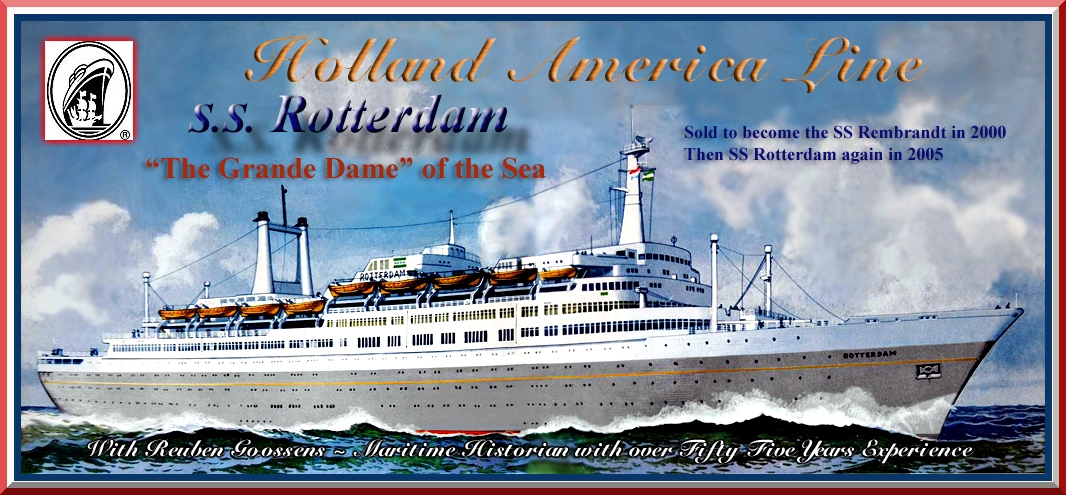
Please
Note:
Photographs,
postcards and images on this page are from the author’s collection unless
stated otherwise!
SS Rotterdam - Part Seven
Comprehensive
Please Note:
If you arrived at
this page via a search engine: Please read Part One first!
Best wishes,
Reuben Goossens.
Maritime Historian & Founder of the “Save The
Classic Liners Campaign.
And the “Save The SS Rotterdam
Campaign.”
****************************
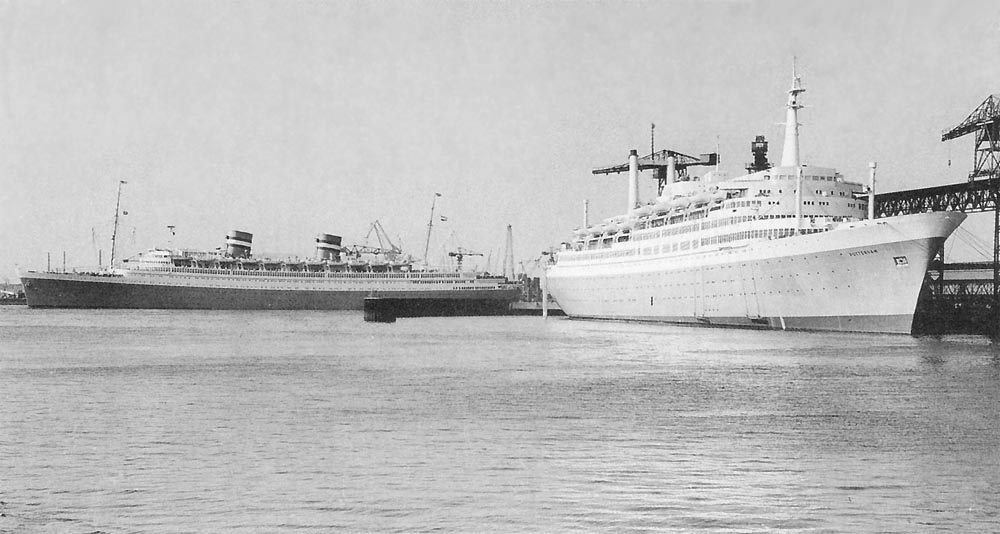
The
As the great HAL Liners, the SS Nieuw Amsterdam
passes her as she departs bound for
A RDM Photograph – From my personal Collection
SS Rotterdam Original 1959 Specifications and Further Details
1959
Specifications:
Builder: Rotterdam
Dry Dock Company,
Hull Plate laid-down: December 14,
1956.
Ship Launched: December
14, 1958.
Sea Trails: July 11 & August 1 to 6, 1959
Ship Completed: August 7,
1959.
Royal Test Voyage: August 20,
1959.
Call sign: PHEG.
IMO: 5301019.
Maiden
Voyage: September 3, 1959.
Tonnage: 38,650
GRT (Gross Registered Tons).
. 31,530 Displacement Tons.
. 7,800 Deadweight Tons.
Length: 749ft
- 228.2m.
Height, keel to
Machinery Weight: 350 tons.
Propulsion power, normal: 34,600 SHP.
Maximum Propulsion Power: 38,500 SHP.
Astern Power: 20,700
SHP.
Engines: De Schelde Double Reduction Parsons Geared Triple
Expansion Steam Turbines.
Boilers: Four;
however only three need to be used to provide full speed and power!
Screws: Two
Rudder: A
single 20 ton streamlined rudder,
Passenger Decks: Ten
. 801
Second Class.
Cruising: 730
One Class - from 1969 1,109 One Class passengers.
Crew: 776
Dry Cargo: 102,000
cu.ft.
Refrigerated
Cargo: 14,000
cu.ft - 14.000 cubic metres.
Stabilizers: A pair
of Denny-Brown fins on both sides of the ship, controlled by Gyroscopes. They
will reduce the rolling movement of the ship.
Air-Conditioning: The ship
is air-conditioned, with cabins having individual thermostat controls.
Additional Information:
In this section I
will cover some of the ships other vital part and vital equipment, etc. I am
sure that you will find it interesting to have this information available!
Mast: Made
of aluminium weighing 7 tons, and 77ft - 23.5m tall it contained the Radar on
the top Crows Nest.
Ships Whistle or Horn: She has two Horns,
and one was located on the lower Crows Nest on the Radar Mast, whilst the
second is located on the forward portside Kingpost 2 thirds up, on the posts
right side. The sound of her fine traditional Horns can be heard as far as 9
miles or 14.5 kilometres away!
Anchors: Three,
with one located on the starboard and the other on the portside bow, the third
is the spare. Each anchor weighs 6½.tons.
Electricity: 4
turbo-generators are able to produce a good 5,400 kW at 440 volts, 60 Hertz.
Lights: The
ship has around 4,300 florescent tubes and 20,000 lights.
Refrigeration: The
refrigerated cargo space was 45,350 cubic feet, including the than 60 large
storage refrigeration units throughout the ship for general storage of food and
beverages for passenger and crew needs.
Radio: There
were two radio transmitters, each 600 Watts, frequency 23 to 410 mega Hertz.
Three radiotelegraph receivers covering frequency range 1.5 to 200 mega Hertz.
There was also one alarm transmitter & receiver of 50 Watts, 500 kilo
Hertz. The Bridge radiotelephone was 150 mega Hertz.
Public Address system: Passengers and/or
crew can be reached from the Bridge, or the Cruise manager/Director’s
office, etc, and they can be heard through some 220 speakers around the ship!
Water Production: Four Steam flash evaporators are able to produce some 800 tons of
fresh drinking water daly.
Portholes: SS
Rotterdam had 705 portholes, as well as countless windows in her
superstructure.
Sprinklers: There
were a good 4,400 fire sprinklers that were all connected together, but
separated into 40 groups, all having audio-visual alarm systems for each group!
Sprinklers are fitted in each cabin, public venue, be it a vestibule or a
stairway, but also lockers, service areas and all crew areas and their
accommodations!
King Posts: Four,
two are located forward and two aft. There are painted in a pale grey colour.
Derricks: Six,
four located forward and two aft. One pair forward and aft has a lifting
capacity of 10 tons each. Whilst the remaining two forward pair had a capacity
of just 5 tons each. Derricks are suspended from the four King Posts!
Hatches: Three,
two forward and one aft.
Watertight-Bulkheads: There are
thirteen watertight Bulkheads fitted across the beam of the ship making her
safe!
Watertight Doors: 44 doors
link the 14 watertight compartments on “A” and “B”
Decks.
Lifeboats: She
had been fitted with 18 buff to yellow aluminium
lifeboats.
I trust that you will
have found the above details of this most amazing ship interesting, for it does
cover a great deal of how this great ship, “The
Grande Dame” the SS
Rotterdam came to be what she was! I have attempted to stay as close as
possible to her as built, for indeed changes came about in later days, some of
which I never did like, although she was always a much loved and a beautifully
maintained ship, right to the very end. Even Premier Cruises, who renamed her
“Rembrandt” and they did look after her extremely well. When she
was inspected at
Reuben Goossens.
Photographs of the Engine Room
Thank
you Klaas for your excellent photographs taken on the
Engine Room Photographs & More:
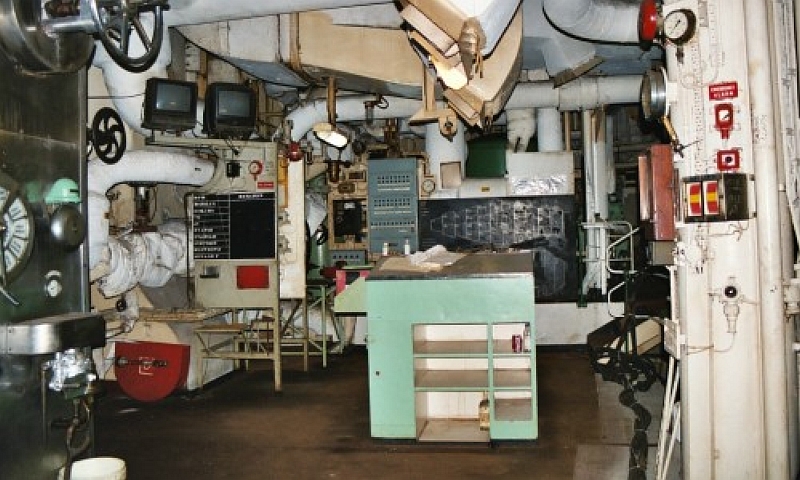
Engine Room
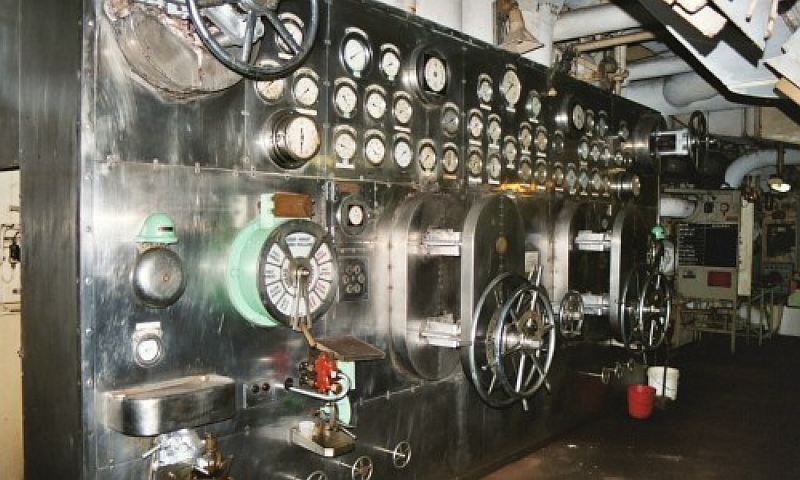
Here we see a good view the Engine Room Console
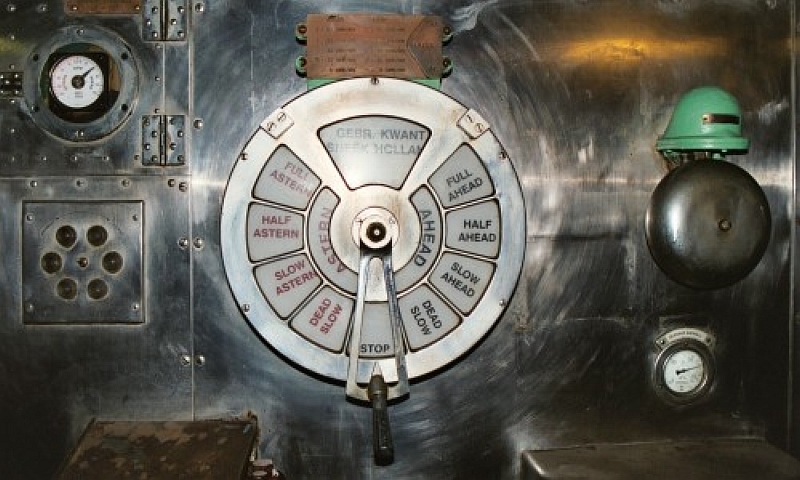
And this is a close up of the Telegraph
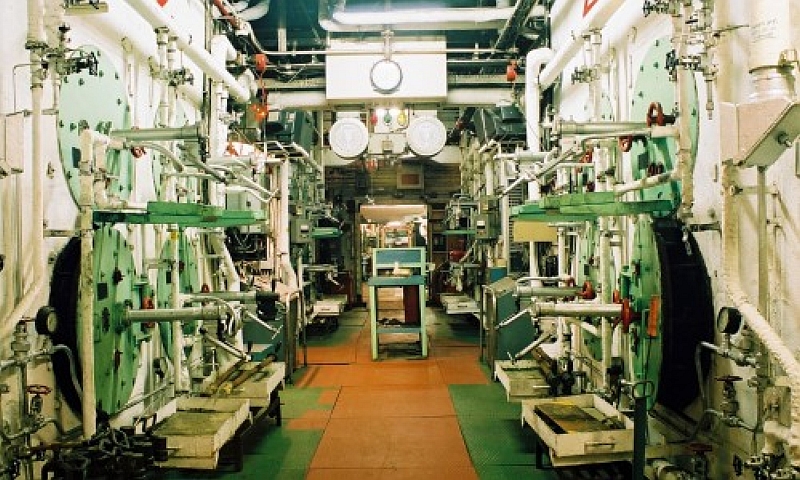
We are now looking at the Boiler Room
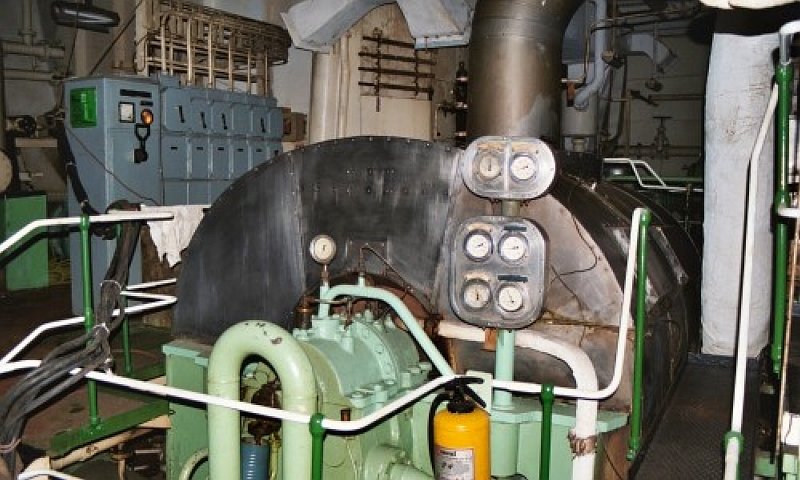
Here we see the Low Pressure Turbine
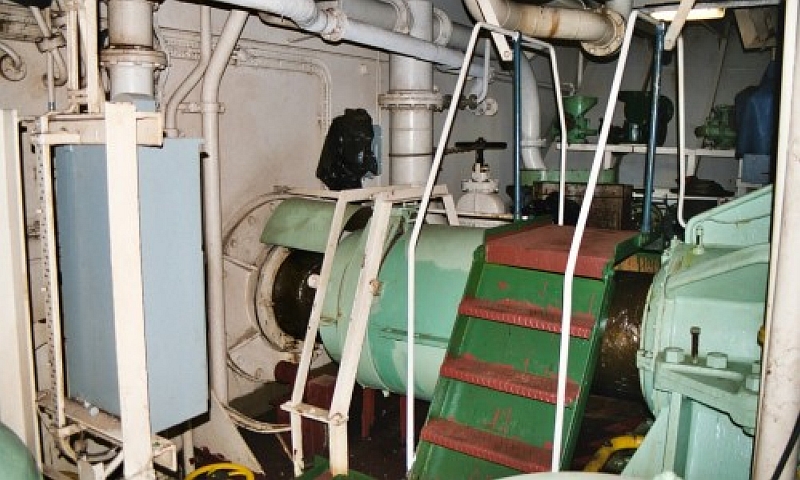
Heading far aft, here we see the Portside Propeller Shaft
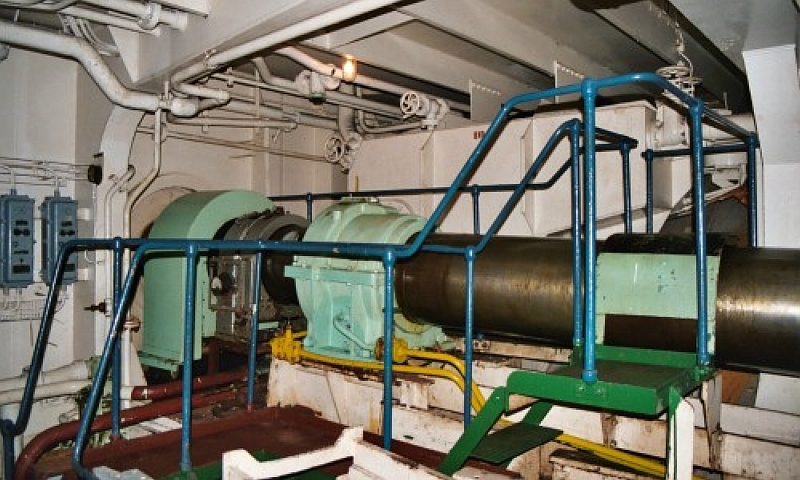
And this is the Starboard Propeller Shaft
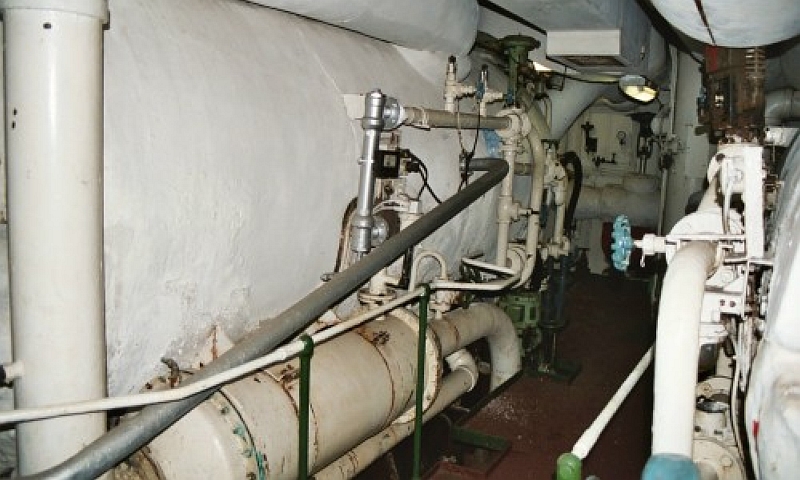
The Water Evaporator
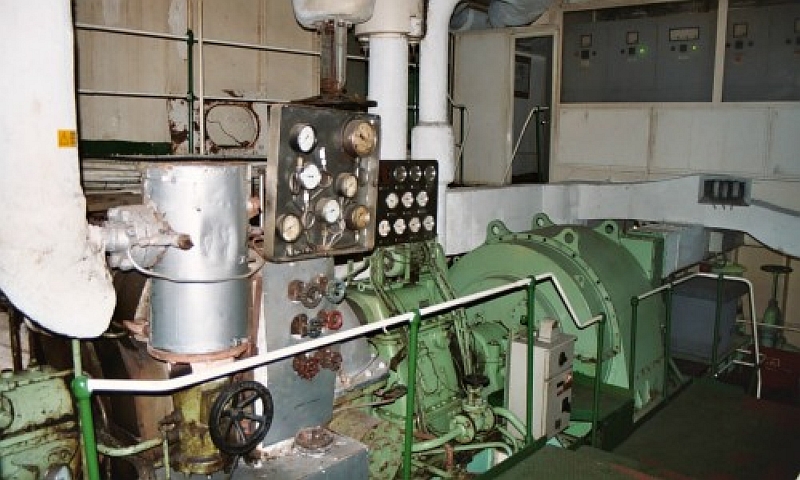
And this is the Turbo Alternator
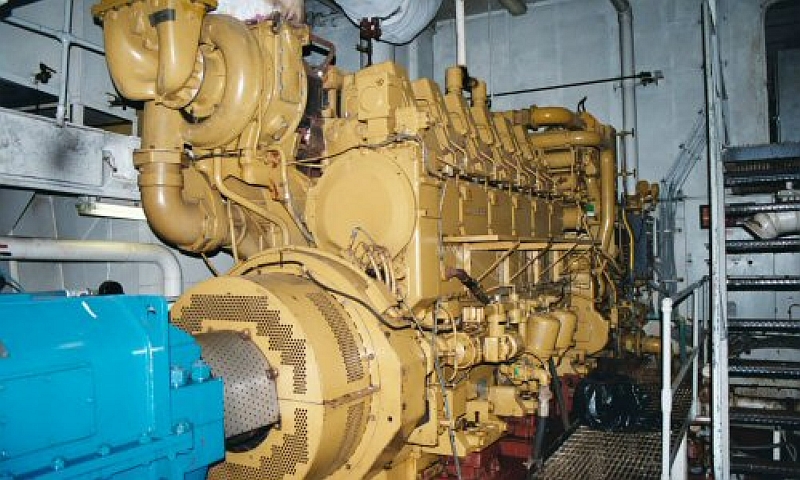
The Bow thrusters Engine
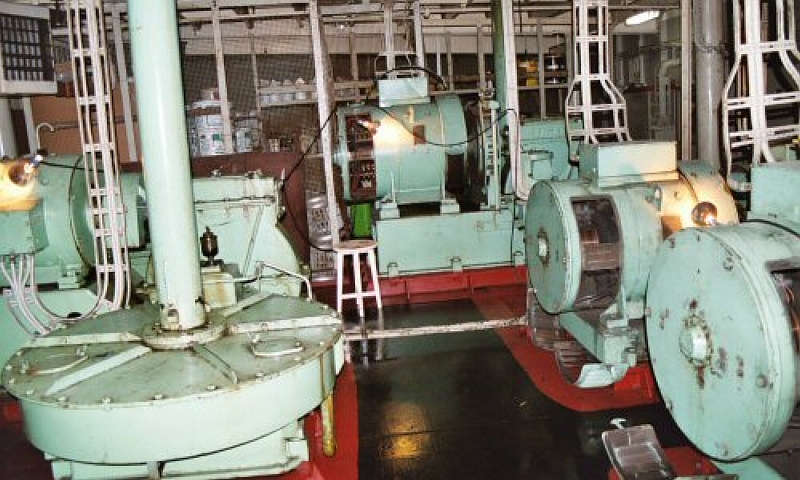
Here we see some Capstan Engines
****************************
SS Rotterdam INDEX
online to date:
Part One: Construction &
her Maiden Voyage Sep 3, 1959.
Part Two: Her
Grey Hull days - Sep 1959 to 1971.
Part Three: Her HAL days & Premier Cruises days - 1972 to 2000.
Part Six: Deck
Plans, 1959 First & Tourist & a later One Class Cruise Plan.
****************************
Visit our ssMaritime Main INDEX
Where you will discover well over 600 classic liners!
ssMaritime.com & ssMaritime.net
Where the ships of the past make history & the 1914 built MV Doulos Story
Also visit my
“Save The Classic Liners Campaign”
Please Note: ssmaritime and associated sites are 100% non-commercial and the author seeks no funding or favours of any shape or form, never have and never will!
Photographs on ssmaritime and associate pages are by the author or from the author’s private collection. In addition there are some images that have been provided by Shipping Companies and private photographers or collectors. Credit is given to all contributors. However, there are some photographs provided to me without details regarding the photographer/owner concerned. I hereby invite if owners of these images would be so kind to make them-selves known to me (my email address may be found on www.ssmaritime.com only), in order that due credit may be given.
ssMaritime is owned & © Copyright by Reuben Goossens - All Rights
Reserved
